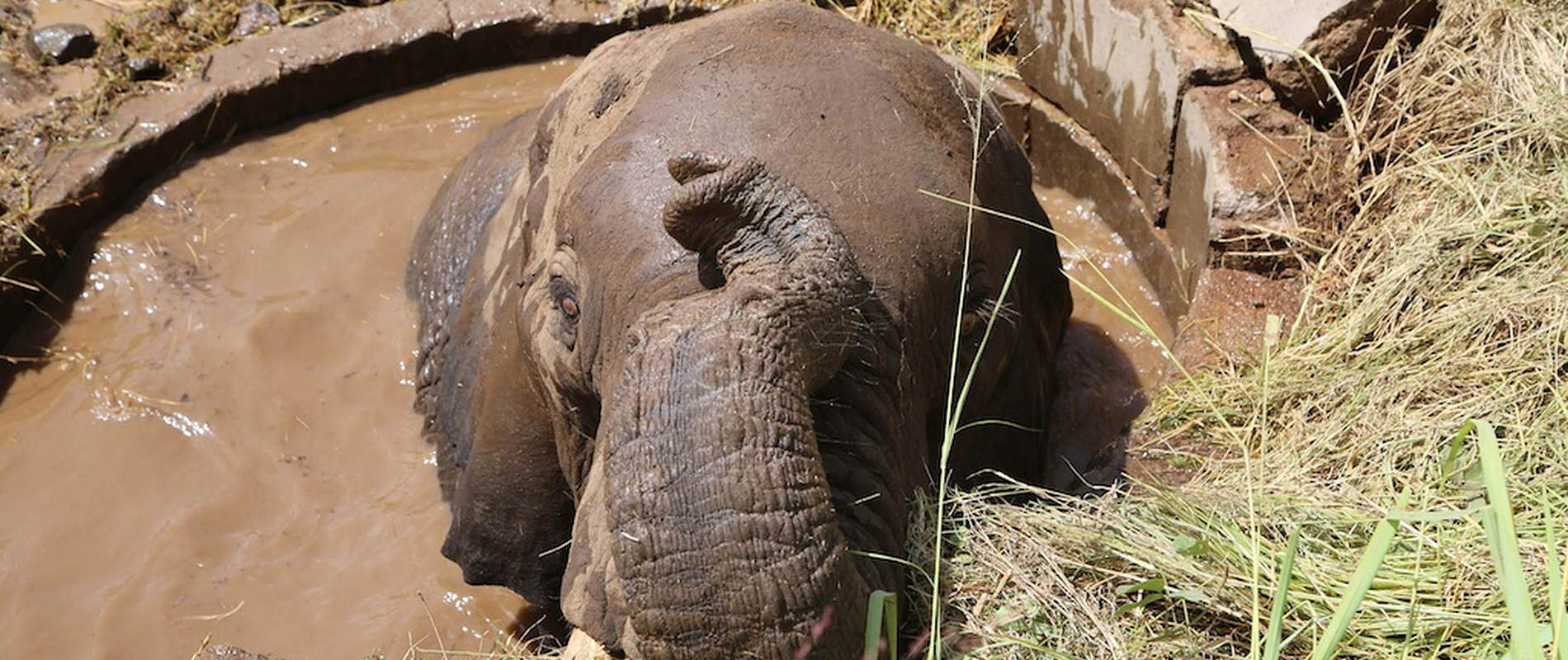The protected Meru Conservation Area covers over 5,000sq kilometres and includes Meru National Park, Kora National Park, Bisiandi, Mwingi and Rahole National Reserves and is the second largest contiguous elephant habitat after the Tsavo’s
The protected Meru Conservation Area covers over 5,000sq kilometres and includes Meru National Park, Kora National Park, Bisiandi, Mwingi and Rahole National Reserves and is the second largest contiguous elephant habitat after the Tsavo’s. The David Sheldrick Wildlife Trust (DSWT) is supporting the conservation of this important ecosystem through anti-poaching and veterinary units that work hand in hand with Kenya Wildlife Service (KWS). These units are based out of Meru National Park, an astonishingly diverse and stunning wilderness and arguably one Kenya’s most picturesque National Park.




Meru National Park is located in a predominantly arid part of Kenya but due to the Nyambene Hills, a formidable water catchment area on its western boundary, Meru National Park is unique in that it has Thirteen (13) permanent rivers running through it. This has created a mosaic of different habitats and varied landscape with no parallel in many other Parks of East Africa. The diverse vegetation types in the Park are mirrored by a diversity of wildlife with 500 species recorded including rare species such as the caracal, lesser kudu, aardwolf, over 400 species of birds and over 720 plant species. The park has substantive populations of large mammals, including the threatened African elephant, cheetah and Grevy's zebra (which is now practically confined to Kenya). Black rhinoceros and the introduced white rhinoceros can also be found within the Park’s 84sq km rhino sanctuary.


Meru National Park’s conservation history is a riches-to-rags-and-back-to-riches story. The Park was made famous in the 1960s by Joy and George Adamson who reintroduced their beloved lioness “Elsa” into the wild in the Park. Their experience was made into a ground breaking 1966 feature film “Born Free”. At the peak of Meru’s popularity, close to 40,000 people visited the Park but in the late 1970s and throughout the 1980s, there was a huge surge in poaching and general lawlessness and visitor numbers plummeted. The park's infrastructure virtually collapsed and large mammals were almost completely wiped out. All the park's once famous rhinos were slaughtered and between 1984 and 1989 ivory poachers reduced the elephant population from 3,500 to just 210. Since 1998 a number of elephants have been translocated to the Park and the population has steadily grown at an annual rate of 5% to 500 individuals.

It has taken the determination of KWS, significant investment, the beefing up of security and the translocation and re-introduction of large mammals to get Meru back to its former glory. Numerous species have been successfully trans-located to Meru including reticulated giraffe, Grevy’s zebra, impala, Bohors reedbuck, leopard and elephant. KWS has also established a rhino sanctuary which now protects a population of over 70 white and black rhino.
The DSWT has partnered with KWS to fund and operate a fully mobile veterinary unit and an anti-poaching unit based out of Meru National Park. Since February 2013, the mobile veterinary unit which also supports all wildlife dispersal areas around the Eastern Conservation Area and the Samburu-Laikipia ecosystem has saved the lives of numerous threatened and endangered species. Over the last few months, the veterinary unit responded to twenty five (25) cases, ten (10) of these being elephants. Additionally, the team also conducted disease risk assessments on bushbuck and waterbuck in the Mount Kenya Conservancy, home to a captive breeding population of endangered Mountain bongo. The results of the assessment provided information on the microbial and parasitic disease situation in the area prior to the reintroduction of the Mountain bongo into the wild.





The Meru anti-poaching unit rolled out in August 2014, has lifted numerous snares over the years and made numerous arrests greatly deterring illegal activities in Meru National Park. Over the last six (6) months i.e. Jan - June 2016 the team has lifted 487 snares during their routine patrols. They have also made six (6) arrests, four (4) being ivory poachers each with a bow and twenty eight (28) poison arrows in total.



The DSWT is committed to continuing our support to this significant ecosystem and we are proud to work with Kenya Wildlife Service (KWS) in giving wildlife a second chance in this pristine wilderness.















